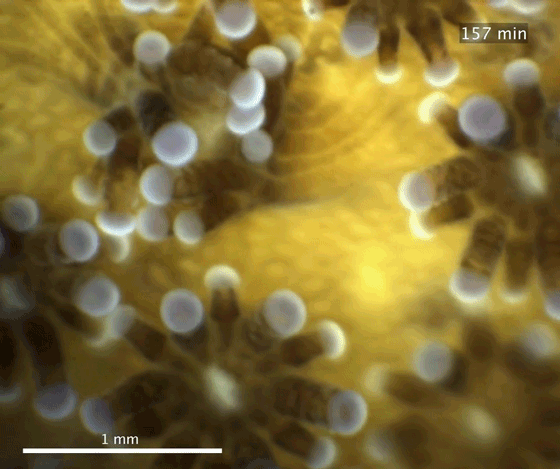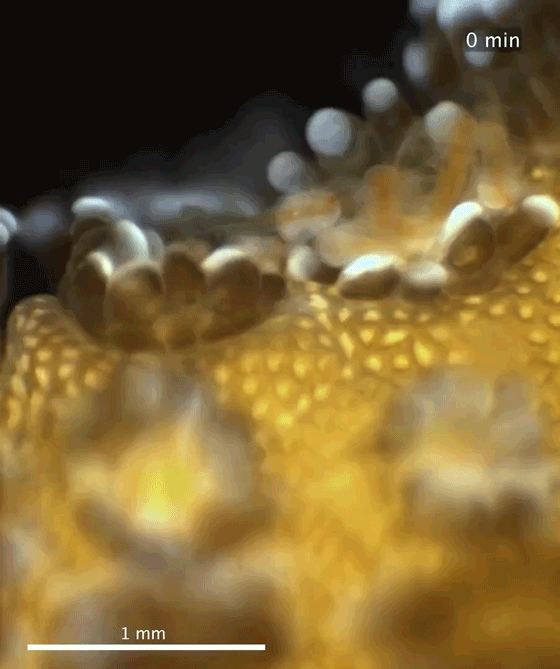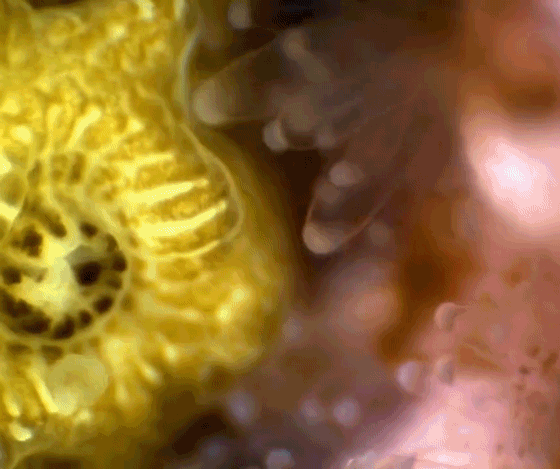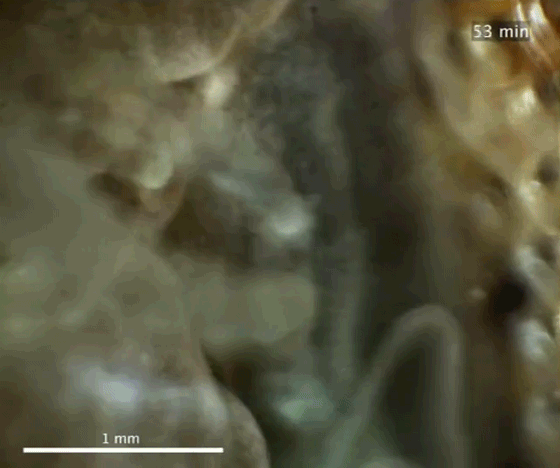Although corals look like a plant, they are actually animals, made up of thousands of individual polyps living together in a colony. Because of their small size, scientific observation of them has been difficult, if not impossible outside of a lab.
Now, Andrew Mullen and Tali Treibitz from the University of California San Diego have developed a new way to observe coral colonies in their natural habitat. The Benthic Underwater Microscope (BUM) allows divers to capture photos of corals over time without removing samples to be studied in a lab, as they demonstrated in a paper published in Nature on July 12th.
They used the BUM in the Gulf of Eilat at the northern tip of the Red Sea to observe corals feeding, fighting, sharing, and even ‘kissing’, a previously unobserved behavior.
As coral bleaching threatens the world’s reefs, they hope that the instrument will be an important tool in understanding how corals work in the complex and constantly changing environment of the sea floor.
Kissing

Two polyps connect their gastrovascular openings at night, a behavior that has never been documented before. Dubbed ‘polyp kissing,’ this behavior likely allows the polyps to exchange materials, such as food.
Communal feeding

Scientists injected Artemia, a brine shrimp, near the coral and captured a time-lapse video of communal feeding between two neighboring polyps. The two polyps work together by intertwining their tentacles to digest their prey.
Competition with Pocillopora

Two different loose corals colonies, Stylophora on the left and Pocillopora on the right were placed close together to induce competition. When corals compete for dominance, they emit mesenterial filaments, string-like structures, which they use to attack and, ultimately, digest their rival.
Competition with Platygyra

Here, the Platygyra, on the left, has attacked and is beginning to digest the Stylophora, on the right. Scientists found that competition response times and attack mechanisms differed depending on the coral. When a Platygyra was placed next to one of its own kind, for example, it did not attack at all.
Brine shrimp

A Platygyra colony extends its filaments when exposed to a net filled with brine shrimp, right. Colonies were exposed to a number of different stimuli in order to record their responses.
More Must-Reads From TIME
- Dua Lipa Manifested All of This
- Exclusive: Google Workers Revolt Over $1.2 Billion Contract With Israel
- Stop Looking for Your Forever Home
- The Sympathizer Counters 50 Years of Hollywood Vietnam War Narratives
- The Bliss of Seeing the Eclipse From Cleveland
- Hormonal Birth Control Doesn’t Deserve Its Bad Reputation
- The Best TV Shows to Watch on Peacock
- Want Weekly Recs on What to Watch, Read, and More? Sign Up for Worth Your Time
Contact us at letters@time.com